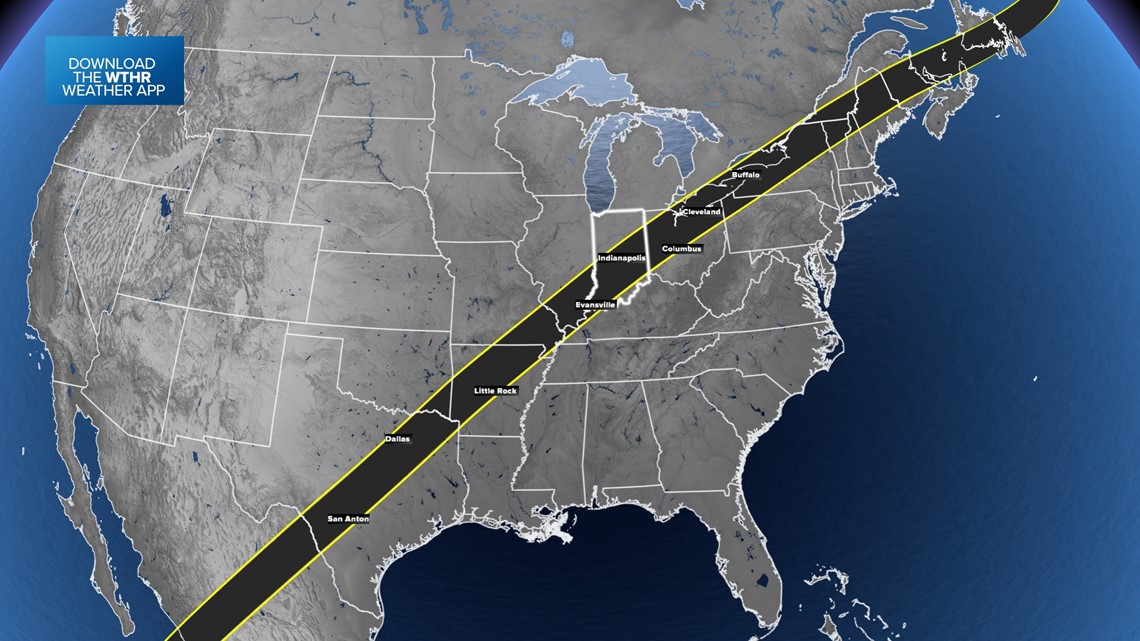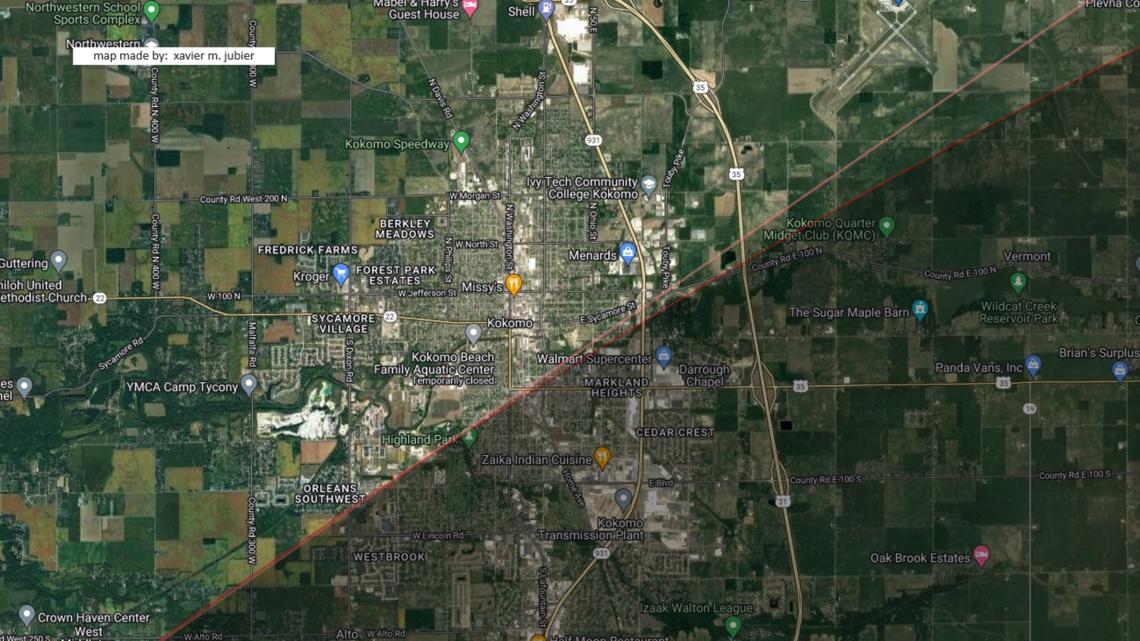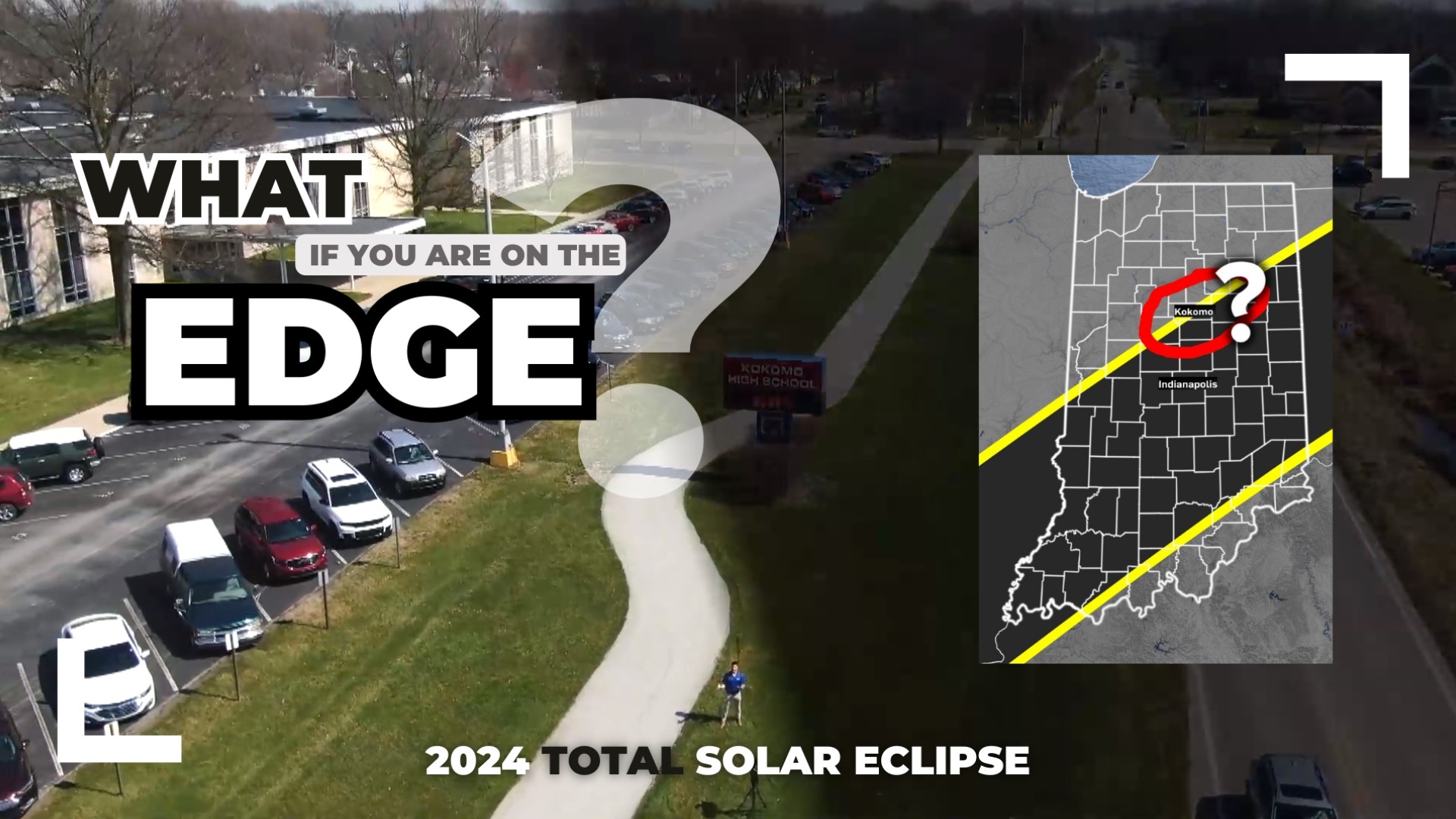INDIANA, USA — Only about 10% of Americans are lucky to live inside the path of totality for the upcoming total solar eclipse. However, there are many who live right on the edge? Will that be enough to get the ultimate experience?
We spoke with Dr. Brian Murphy, the director of the Holcomb Observatory and Planetarium at Butler University, who says "it's all or nothing" when it comes to totality.
We also visited Kokomo, Indiana, a town divided. One half of the town is in totality, while the other half is not. What will it be like?
Tap HERE to see the public events going on in Indiana where you can see the total solar eclipse.
Who is in the path?
Totality enters southern Texas at 1:27 p.m. CDT, moving over 1,500 mph. Then, it leaves Maine at 3:35 p.m. EDT. It's only over the United States for just over an hour, passing over Texas, Oklahoma, Arkansas, Missouri, Illinois, western Kentucky, Indiana, Ohio, northwest Pennsylvania, New York, Vermont, New Hampshire and Maine.
The black swatch below highlights the path, while the yellow lines are the outer edges of totality. If you're in the black, you'll get at least 30 seconds of totality. What happens on the edge in the yellow?


Life on the edge...
When you are in totality, Murphy said you will start to see "the streetlights come on, birds squawking and roosting, insects chirping," but the effect will not be as prominent on the edge. He explained it being "just like after sunset" with some darkness, but you may only see the sun's corona for a few seconds. It may not be enough time to really take the solar eclipse glasses off safely.
For noticing any darkness, the magic number is roughly 93% totality. That is when you will start to notice the sky not being as bright. You still cannot look at the sun because it puts out about 4 trillion 100-watt lightbulbs worth of light, which is blinding to the human eye.
However, the view is entirely different from 99% totality to 100% totality. If you're on the edge, you will get some darkness, but you won't be able to take the glasses off, and you won't be able to see the corona.
What about Kokomo, Indiana?
Let's take a real example of a city in Indiana. Welcome to Kokomo, home of the Wildkats. The city is split almost in two for totality.
For those north of the line, including downtown, Ivy Tech and the Kokomo Speedway, there will not be totality. It will still get darker, and folks may briefly see the diamond ring effect, where there will still be a speck of sunlight on the edge. However, it will not be safe to take off the glasses.
For those just barely south or east of the line, including IU Kokomo, Walmart and the Kokomo Transmission Plant, totality will be possible, but not for long. You may be able to see totality for a few seconds, just enough for your eyes to adjust and see the sun's corona. However, you will notice you're on the edge by seeing the sky in the north, illuminated like normal. You may not see as many stars or planets in the sky.


How far do I need to be into the path to get a good view?
Good news! Not too far! Because of the cord length of a circle, small distances nearby make a huge impact on duration of totality.
"If you move a mile in, you might get 30 seconds of totality. You move 5 miles in, and you might get a minute and a half of totality," Murphy said.
For example, if you are on the south side of Kokomo near the Texas Roadhouse and Lowe's, you will get roughly one minute of totality. That's just about a 10-minute drive from downtown, which is not in the path of totality. That's a big difference over a small distance.
If you go south to Tipton, about 30 minutes south of downtown Kokomo, you will get get about two and a half minutes of totality.
If you want to see the sun's corona with your eye and not have to worry about glasses for the longest amount of time, a small distance from the edge will make a huge difference. Plus, more of the sky will be dark, and you'll have a better chance at seeing stars and planets across the sky with more darkness — not just at your location but for areas surrounding you to make the effect more dramatic.
Butler University has a link to an interactive map where you can see the start and end time of totality for any location in the path.

